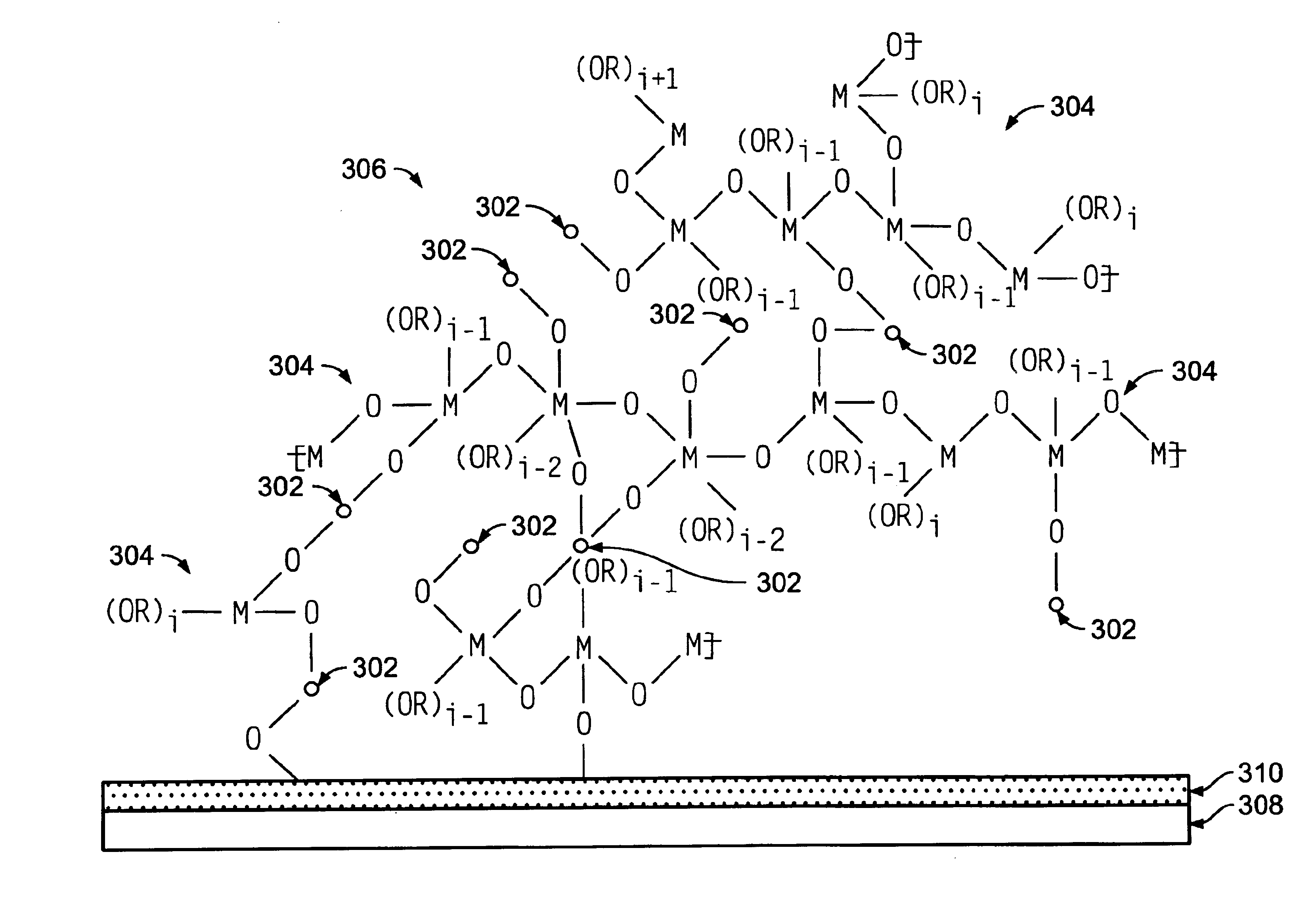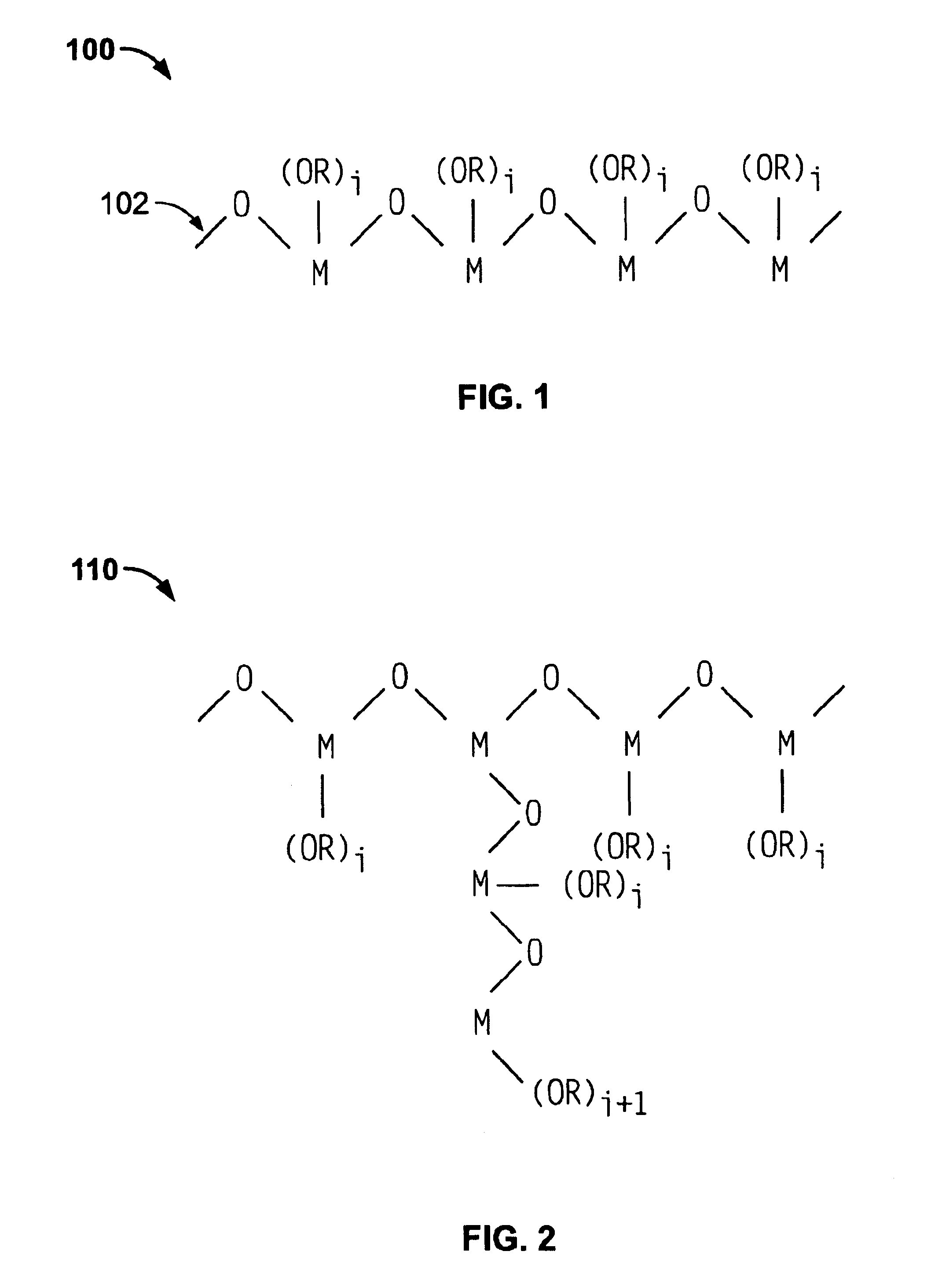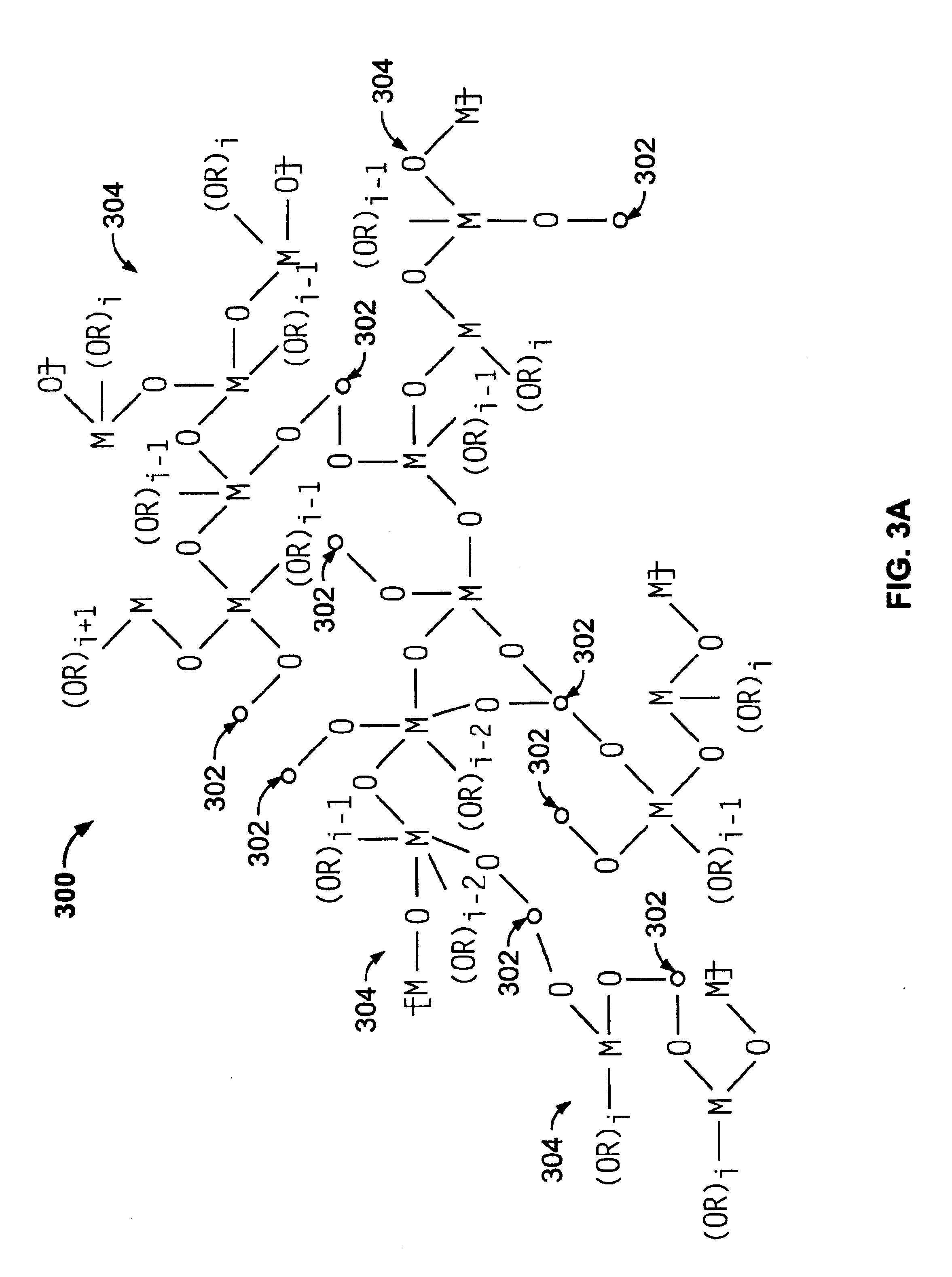Wire interconnects for fabricating interconnected photovoltaic cells
a photovoltaic cell and wire interconnection technology, applied in the field of photovoltaic devices, can solve the problems of limiting the manufacturing to batch processes and the application to those tolerant of rigid structures, and achieve the effect of improving performan
- Summary
- Abstract
- Description
- Claims
- Application Information
AI Technical Summary
Benefits of technology
Problems solved by technology
Method used
Image
Examples
example 1
Dip-Coating Application of Polylinker
[0071]In this illustrative example, a DSSC was formed as follows. A titanium dioxide nanoparticle film was coated on a SnO2:F coated glass slide. The polylinker solution was a 1% (by weight) solution of the poly(n-butyl titanate) in n-butanol. In this embodiment, the concentration of the polylinker in the solvent was preferably less than 5% by weight. To interconnect the particles, the nanoparticle film coated slide was dipped in the polylinker solution for 15 minutes and then heated at 150° C. for 30 minutes. The polylinker treated TiO2 film was then photosensitized with a 3×10−4 N3 dye solution for 1 hour. The polylinker treated TiO2 film coated slide was then fabricated into a 0.6 cm2 photovoltaic cell by sandwiching a triiodide based liquid redox electrolyte between the TiO2 film coated slide a platinum coated SnO2:F glass slide using 2 mil SURLYN 1702 hot melt adhesive available from DuPont. The platinum coating was approximately 60 nm thick...
example 2
Polylinker-Nanoparticle Solution Application
[0072]In this illustrative example, a 5.0 mL suspension of titanium dioxide (P25, which is a titania that includes approximately 80% anatase and 20% rutile crystalline TiO2 nanoparticles and which is available from Degussa-Huls) in n-butanol was added to 0.25 g of poly(n-butyl titanate) in 1 mL of n-butanol. In this embodiment, the concentration of the polylinker in the polylinker-nanoparticle solution was preferably less than about 50% by weight. The viscosity of the suspension changed from milk-like to toothpaste-like with no apparent particle separation. The paste was spread on a patterned SnO2:F coated glass slide using a Gardner knife with a 60 μm thick tape determining the thickness of wet film thickness. The coatings were dried at room temperature forming the films. The air-dried films were subsequently heat treated at 150° C. for 30 minutes to remove solvent, and sensitized overnight with a 3×10−4 M N3 dye solution in ethanol. The ...
example 3
DSSC Cells Formed without Polylinker
[0073]In this illustrative example, an aqueous titanium dioxide suspension (P25) containing about 37.5% solid content was prepared using a microfluidizer and was spin coated on a fluorinated SnO2 conducting electrode (15 Ω / cm2) that was itself coated onto a coated glass slide. The titanium dioxide coated slides were air dried for about 15 minutes and heat treated at 150° C. for 15 minutes. The slides were removed from the oven, cooled to about 80° C., and dipped into 3×10−4 M N3 dye solution in ethanol for about 1 hour. The sensitized titanium dioxide photoelectrodes were removed from dye solution rinsed with ethanol and dried over a slide warmer at 40° C. The sensitized photoelectrodes were cut into small pieces (0.7 cm×0.5-1 cm active area) and sandwiched between platinum coated SnO2:F-transparent conducting glass slides. A liquid electrolyte containing 1 M LiI, 0.05 M iodine, and 1 M t-butyl pyridine in 3-methoxybutyronitrile was applied betwee...
PUM
| Property | Measurement | Unit |
|---|---|---|
| size | aaaaa | aaaaa |
| melting temperature | aaaaa | aaaaa |
| melting temperature | aaaaa | aaaaa |
Abstract
Description
Claims
Application Information
 Login to View More
Login to View More - R&D
- Intellectual Property
- Life Sciences
- Materials
- Tech Scout
- Unparalleled Data Quality
- Higher Quality Content
- 60% Fewer Hallucinations
Browse by: Latest US Patents, China's latest patents, Technical Efficacy Thesaurus, Application Domain, Technology Topic, Popular Technical Reports.
© 2025 PatSnap. All rights reserved.Legal|Privacy policy|Modern Slavery Act Transparency Statement|Sitemap|About US| Contact US: help@patsnap.com



